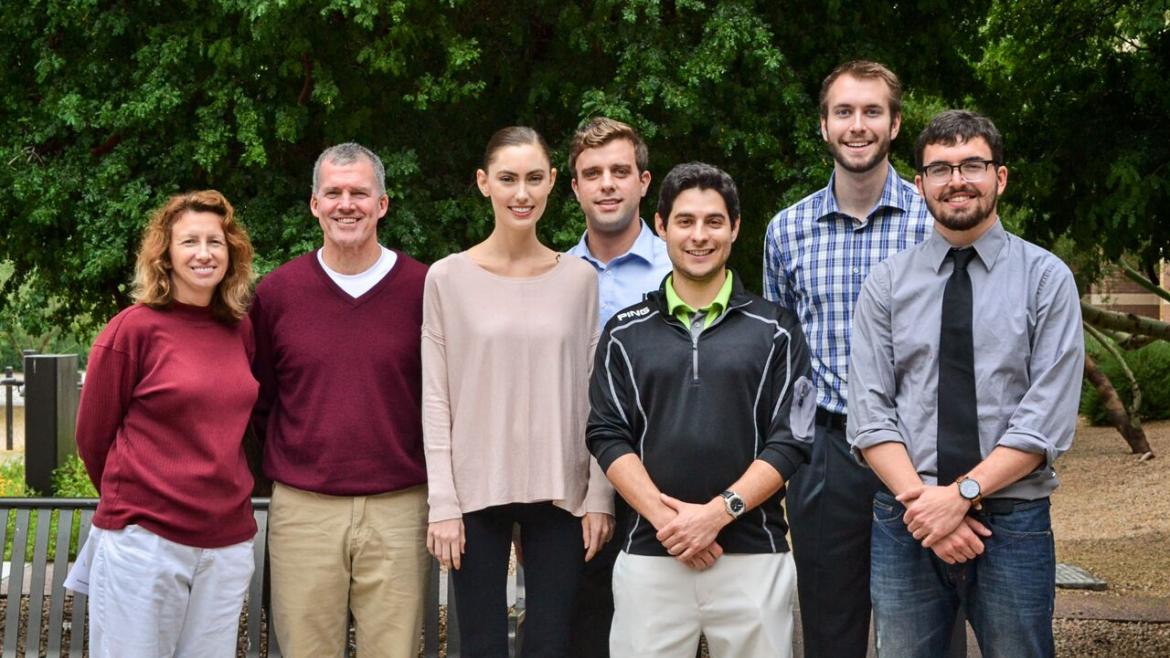What do golf balls and the staff of your local pharmacy have in common?
They can both benefit from data analysis.
In the case of golf balls, analyzing data related to product dimensions can result in a better ball, which means a better game on the green. In the case of a pharmacy staff, analyzing data related to things like the hiring process can result in better-equipped workers, which means more pleasant drugstore visits for customers.
The sheer range of fields in which statistical data analysis can be applied is one of the reasons Connie BorrorConnie Borror is a professor in the School of Mathematical and Natural Sciences, an academic unit of ASU’s New College of Interdisciplinary Arts and Sciences on the West campus. has stuck with it so long. Statisticians, said the Arizona State University statistics professor, “get to play in a lot of different playgrounds.”
Recently, Borror’s work — or “play,” as she thinks of it — in the field has been recognized by the American Society for Quality with the Walter Shewhart Medal for “outstanding leadership, teaching and research in the development and application of statistical techniques for engineering and industrial needs in the areas of response surface design, robust parameter design, measurement system and quality control.”
Although Borror is the 67th recipient of the award, she is the first woman ever to receive the distinction.

ASU statistics professor Connie Borror (far left) poses with Mike Reitel of PING and her statistics students.
Photo courtesy of Dave Hunt
Her interest in the field began as a graduate student when she received an “A” in a statistics class and decided to pursue it further. In 1998, she received her doctorate in industrial engineering from ASU. After she spent some time away from the Valley of the Sun, an opportunity at the West campus drew her back in 2005.
“They were developing a bachelor’s degree in statistics, and it was the only statistics degree available in the state at the time,” Borror said.
She applied to be an instructor in the program and is still teaching there today. One of her more notable courses is the senior statistics capstone class, in which students get the chance to apply their statistics knowledge in the real world. In fall 2014, one group of students worked with PING, a Phoenix-based golf equipment company, using statistical analysis to ensure its products met quality standards.
“The project gave us valuable experience in how to apply statistics in real life,” said then-student Tom Dameron.
Read on to learn more about the practical applications of statistical data analysis, as well as Borror’s thoughts on women in STEM today.
Question: What’s it like to be the first woman recipient of the Walter Shewhart Medal?
Answer: I’m honored. I think that there were probably many women who came before me who were deserving of it and for whatever reason it just didn’t happen at that time. So it’s an honor and it’s very humbling to be the first.
You don’t do these things alone. You have people supporting you along the way, and I’ve had some great opportunities at ASU that have let me do the things necessary to be considered for something like the Walter Shewhart Medal. I owe a lot to my college and to my colleagues.
Q: How do you feel about the current environment for women in STEM? Is it improving?
A: I’d like to think so, but at the high school and junior high level we’re still not seeing a large percentage of women participating in [STEM clubs or groups]. There was a robotics competition held last year in the Phoenix area, and of about 60 high school students participating, only four were women. So we still have a long way to go. But overall, it’s better than it has been.
When I was working on my PhD in industrial engineering, there was a handful of [women] who worked together and supported each other. It would be nice to see that happen more.
Q: Besides golf equipment, what are some other practical applications for statistics that people may not know about?
A: We’re doing another capstone class this semester, with three different projects. Two are at PING again but one is with Banner Health, where the students are looking at pharmacy staffing, how to best staff pharmacies. It’s a little bit out of the realm of what they’ve done before, but that’s what these projects are about, going into these industries and learning new things and applying statistics in those fields.
A lot of times people may not think statisticians would be working in the health-care area, but there’s a lot of room for data analysis there, especially with some of the new regulations coming up. We’ve also worked with other companies, including nonprofits and thrift stores, to help them arrange and structure their stores so that they function more efficiently. There are lots of things you wouldn’t think you’d be able to apply statistics to. There are companies that have to write grants, and statisticians can help them streamline the process of writing grants. So I’m hoping my students will have the opportunity to work with projects like that in the future, too.
Q: What do you like most about statistics?
A: I like the fact that you get to work in a lot of different problem areas. Manufacturing companies, government entities, hospitals. You get to play in a lot of different playgrounds; everybody else’s backyard. Statistics are needed to do analysis in a lot of different fields. That’s really attractive to me, that it has a lot of different applications.
The presentation of Borror’s medal will take place May 15 before the American Society for Quality’s annual business meeting in Milwaukee, Wisconsin.
More Science and technology

Lucy's lasting legacy: Donald Johanson reflects on the discovery of a lifetime
Fifty years ago, in the dusty hills of Hadar, Ethiopia, a young paleoanthropologist, Donald Johanson, discovered what would become one of the most famous fossil skeletons of our lifetime — the 3.2…

ASU and Deca Technologies selected to lead $100M SHIELD USA project to strengthen U.S. semiconductor packaging capabilities
The National Institute of Standards and Technology — part of the U.S. Department of Commerce — announced today that it plans to award as much as $100 million to Arizona State University and Deca…

From food crops to cancer clinics: Lessons in extermination resistance
Just as crop-devouring insects evolve to resist pesticides, cancer cells can increase their lethality by developing resistance to treatment. In fact, most deaths from cancer are caused by the…
